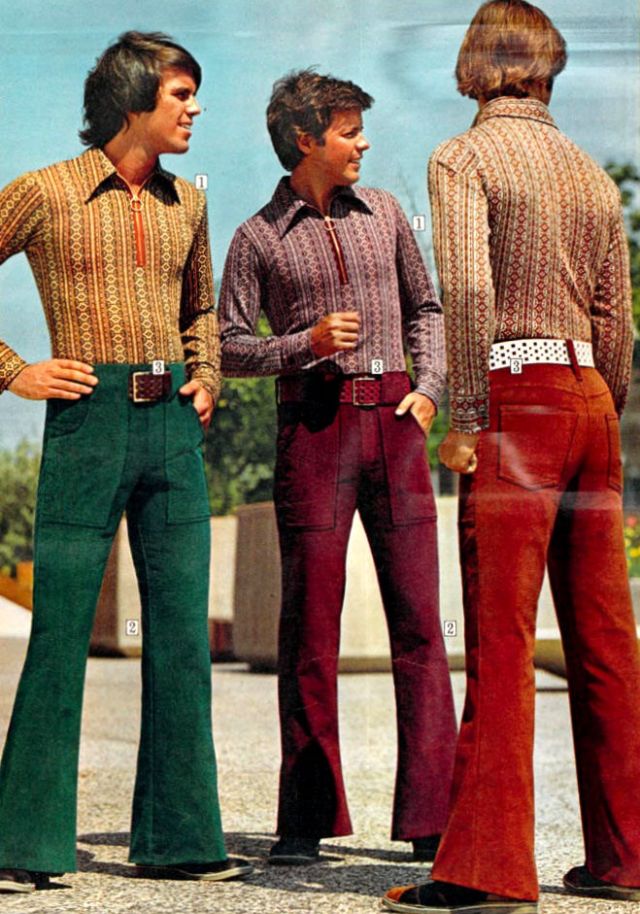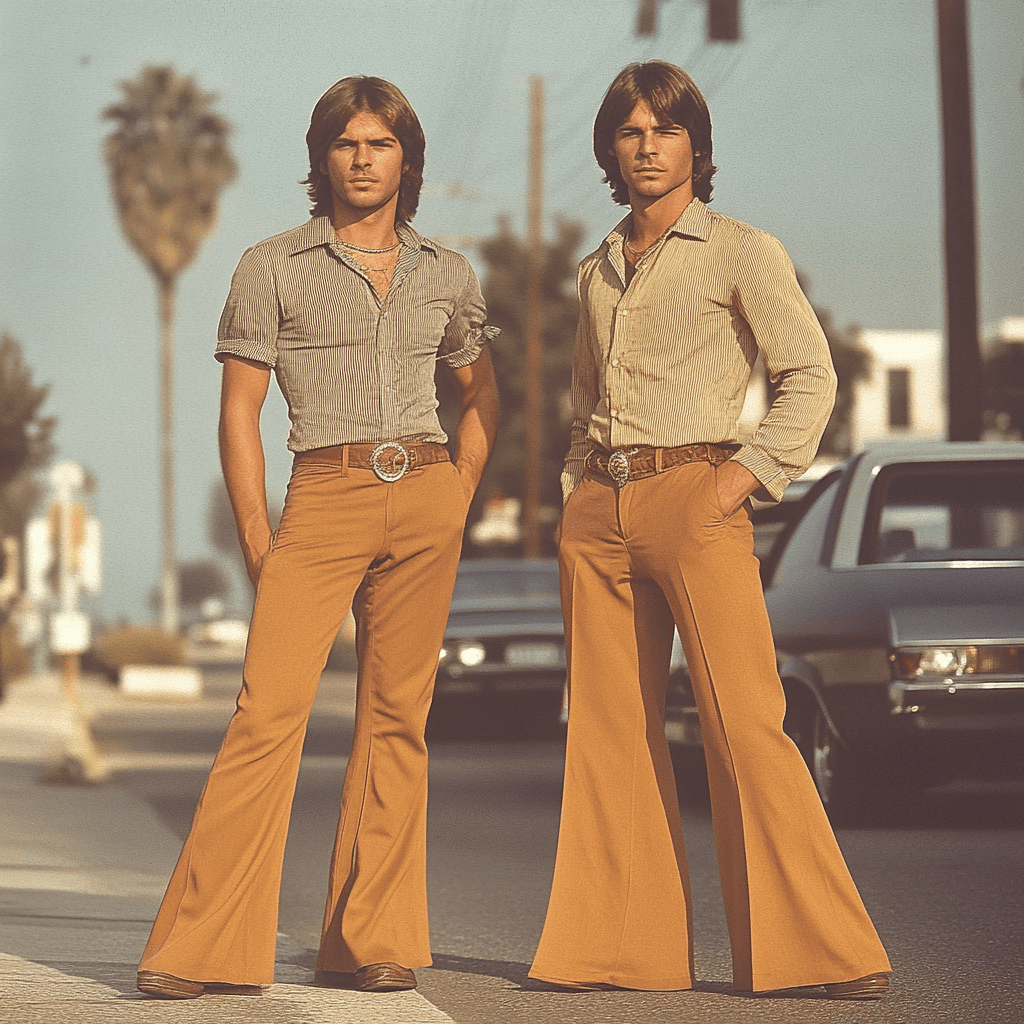
The 1970s, often remembered as the "Me Decade," was a period of profound social, cultural, and political upheaval, and nowhere was this more evident than in the realm of fashion and personal expression. Following the revolutionary spirit of the late 1960s, the new decade embraced a fluidity and individualism that shattered traditional norms, particularly concerning male aesthetics. Gone were the rigid, short-back-and-sides cuts of previous generations, replaced by a diverse tapestry of styles that celebrated length, volume, texture, and a newfound sense of flamboyant masculinity. Male hairstyles in the 1970s became a powerful statement of identity, reflecting everything from counter-cultural rebellion to disco glamour, and from the naturalistic hippie ethos to the burgeoning punk scene.
The transition from the 1960s saw the mainstream acceptance of longer hair for men, a trend that had initially been associated with rebellion and youth movements. By the early 70s, long hair was no longer just for rock stars and hippies; it became a common sight in offices, schools, and homes across the Western world. This foundational shift paved the way for the incredible variety that would define the decade’s male coiffures.
The Long and Layered Revolution: The Shag and Beyond
At the forefront of this follicular revolution was the Shag. More than just a haircut, the Shag was an attitude, a declaration of effortless cool. Characterized by its choppy, layered structure, the Shag offered volume at the crown and tapered layers that framed the face, often flicking out at the ends. It was a versatile cut that could be worn with a center part, a side part, or simply brushed back, giving off an air of casual sophistication or rebellious nonchalance depending on the wearer. Think of rock icons like Rod Stewart, David Cassidy, and even Mick Jagger – their iconic looks were often variations of the Shag.
The beauty of the Shag lay in its ability to adapt. It wasn’t a rigid style; rather, it was a template for movement and natural flow. The layers allowed for easy styling with a hairdryer and a brush, creating volume and a slightly disheveled yet intentional look. For many men, the Shag represented a liberation from the restrictive barbershop cuts of their fathers, offering a sense of freedom and a connection to the burgeoning youth culture. It was a style that said, "I’m relaxed, I’m modern, and I don’t take myself too seriously."
Beyond the definitive Shag, the general trend for men was simply long hair, often worn with a natural, unkempt look. Many embraced their hair’s natural texture, letting it fall freely over their shoulders or down their backs. Center parts were incredibly popular, creating a symmetrical frame for the face, often seen on musicians and actors who embodied the era’s laid-back vibe. This naturalistic approach was a direct descendant of the hippie movement, valuing authenticity and a rejection of artificiality.
The Afro: A Powerful Statement of Identity
Parallel to the mainstream adoption of longer styles, the Afro continued its powerful reign as a symbol of Black pride, identity, and political consciousness. Emerging strongly in the late 1960s as part of the Black Power movement, the Afro in the 1970s became a widespread and celebrated hairstyle, transcending its political origins to become a mainstream fashion statement for Black men and women alike.
The Afro was characterized by its voluminous, spherical shape, achieved by allowing natural, tightly coiled hair to grow out and be shaped into a cloud-like form. It was a defiant rejection of Eurocentric beauty standards that had historically pressured Black individuals to straighten their hair. Wearing an Afro was a declaration of self-acceptance, a celebration of natural beauty, and a visible sign of solidarity with the broader civil rights movement. Icons like Jesse Jackson, Richard Roundtree (Shaft), and various musicians proudly sported their Afros, making it one of the decade’s most iconic and culturally significant hairstyles. The Afro pick, a comb with widely spaced teeth, became an essential tool for maintaining its distinctive shape and volume.
Feathered and Flowing: The Rise of the Blow-Dried Look
As the decade progressed, particularly in the mid to late 70s, a new level of sophistication and grooming entered the male hair landscape, largely driven by the increasing availability and popularity of the hairdryer. The Feathered Look, often associated with Farrah Fawcett’s iconic female hairstyle, was widely adopted by men, especially teen idols and those embracing the burgeoning disco scene.
This style involved hair that was longer on the sides and back, often layered, and then blow-dried with a round brush to create a distinctive "feathered" effect, where the hair was swept back and away from the face, often with a slight curl or flick at the ends. The sides would often "wing out," creating a voluminous, airy look that exuded a sense of effortless cool and youthful charm. Think of heartthrobs like Leif Garrett, Shaun Cassidy, and Erik Estrada – their feathered hair was as much a part of their appeal as their music or acting. This style required more maintenance than the natural Shag, demanding regular blow-drying and careful brushing to achieve its signature bounce and shape. It signaled a move towards a more polished, yet still voluminous, aesthetic.
The Permed Man: Embracing Curls
The 1970s also witnessed the surprising resurgence of the perm for men. No longer confined to women, the permanent wave became a popular option for men seeking to add texture, volume, or full-blown curls to their hair. This trend was particularly prominent in the disco era, where a more flamboyant and expressive masculinity was celebrated.
Men’s perms ranged from tight, bouncy curls that mimicked a natural Afro-like texture (for those with straighter hair) to looser, more natural-looking waves. The perm offered a way to achieve the desired volume and body that was so characteristic of 70s styles without the daily effort of blow-drying. It was a bold statement, often paired with open-collared shirts and gold chains, embodying the confident, dance-floor swagger of the disco king. This embrace of artificial curl marked a significant departure from traditional male grooming, further blurring the lines of gendered fashion.
Sideburns: The Essential Accessory
No discussion of 1970s male hairstyles would be complete without mentioning the ubiquitous sideburns. Evolving from the shorter, neater sideburns of the 1960s, the 70s saw them grow longer, thicker, and more prominent, becoming an integral part of the overall facial hair landscape.
Sideburns in the 70s often extended down to the middle of the ear or even to the jawline, sometimes flaring out into "mutton chops" or simply tapering to a point. They served to frame the face and connect the hair on the head to any facial hair, such as mustaches or beards, which also saw a surge in popularity. Whether paired with a long Shag, a feathered look, or even a shorter, neater cut, prominent sideburns were a defining characteristic of male grooming throughout the decade, adding a touch of rugged masculinity or refined swagger depending on the style.
Subcultural Statements: From Glam to Punk
While mainstream trends dominated, the 1970s was also a fertile ground for subcultures, each with its distinctive hair aesthetic.
Glam Rock, particularly in the early to mid-70s, pushed the boundaries of male grooming into theatrical androgyny. Artists like David Bowie (as Ziggy Stardust) and Marc Bolan sported flamboyant, often brightly dyed hair – red, orange, or platinum blonde – styled into shags, mullets, or spiky creations. Glitter, makeup, and outrageous costumes completed the look, challenging traditional notions of masculinity and beauty. Hair was a crucial element in their performance art, signaling a complete break from convention.
The Disco scene, which peaked in the mid to late 70s, favored a more polished, often slicked-back or permed look. Hair was typically well-groomed, sometimes slightly wet-looking with styling products, and designed to move fluidly on the dance floor. Volume was still key, but it was a more controlled, sophisticated volume than the wilder rock styles.
As the decade drew to a close, the raw energy of Punk emerged as a direct antithesis to the perceived excesses of disco and glam. Punk hairstyles were deliberately anti-establishment, rejecting mainstream beauty standards. Spiky hair, often achieved with gel or even sugar water, brightly colored dyes (pink, green, blue), and shaved sides (mohawks, liberty spikes) became hallmarks of the movement. It was a defiant, aggressive, and often DIY approach to hair, symbolizing rebellion and a rejection of societal norms.
The Professional and the Practical: Shorter, but Still 70s
While long hair, Afros, and feathered styles dominated the cultural imagination, it’s important to remember that not all men sported elaborate coiffures. Many men, particularly in professional settings or older demographics, maintained shorter, neater cuts. However, even these shorter styles often had a distinct 70s sensibility. They were typically fuller on top than the severe short cuts of previous decades, often with a slight side part and, crucially, still accompanied by those prominent 70s sideburns. The "business man’s cut" of the 70s was rarely a crew cut; it was more likely a slightly longer, softer version of a classic cut, reflecting the overall trend towards more natural volume.
Styling and Maintenance: The Tools of the Trade
Achieving these diverse 1970s looks required a new array of tools and products. The hairdryer became an indispensable item for men, allowing them to create volume, feathering, and specific shapes. Round brushes were essential for creating the coveted feathered look and adding bounce. While not as extensive as today’s market, styling products like hair gels, mousses (which began to appear later in the decade), and hairsprays were used to hold styles in place, add shine, or enhance texture. The focus shifted from simply cutting hair to actively styling and maintaining it, reflecting a growing male interest in personal grooming.
Beyond the Hair: What the Styles Signified
Ultimately, male hairstyles in the 1970s were more than just fashion trends; they were powerful cultural signifiers. They represented a profound shift in male identity, moving away from rigid, traditional masculinity towards a more expressive, diverse, and often flamboyant self-image. Hair became a canvas for self-expression, a means to align with a subculture, declare a political stance, or simply embrace a new sense of freedom. The decade celebrated individuality, and male hair, in all its varied glory, was a testament to this spirit of daring experimentation and personal liberation.
In conclusion, the 1970s was a truly transformative decade for male hairstyles. From the ubiquitous Shag and the empowering Afro to the sophisticated Feathered look and the audacious Perm, men embraced a spectrum of styles that were bold, diverse, and deeply reflective of the era’s changing social landscape. It was a time when hair became a statement, a conversation starter, and a vibrant symbol of a generation unafraid to challenge norms and express themselves with unprecedented freedom. The legacy of these daring do’s continues to influence fashion and grooming today, reminding us of a time when hair truly spoke volumes.






